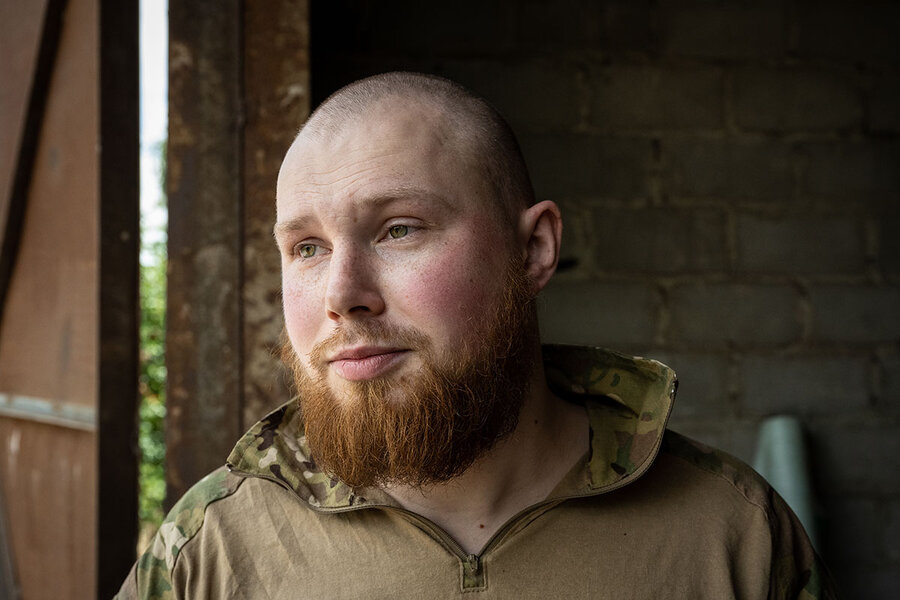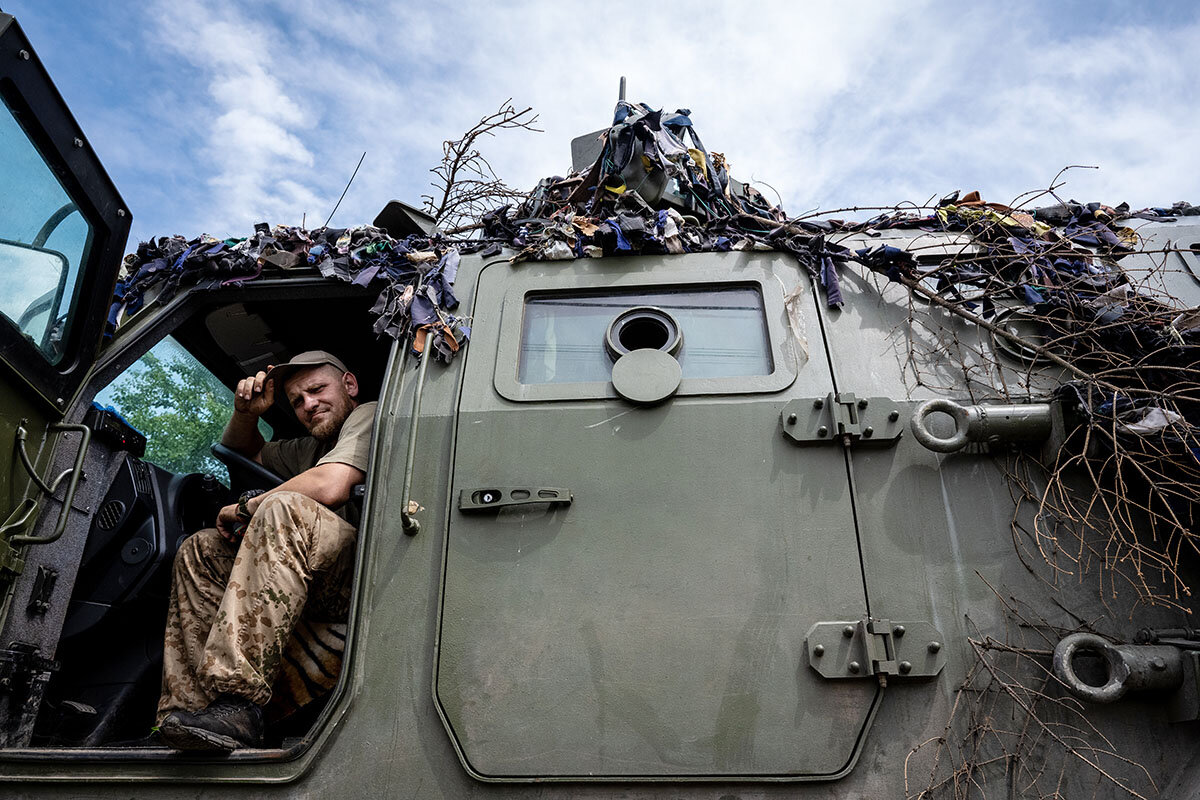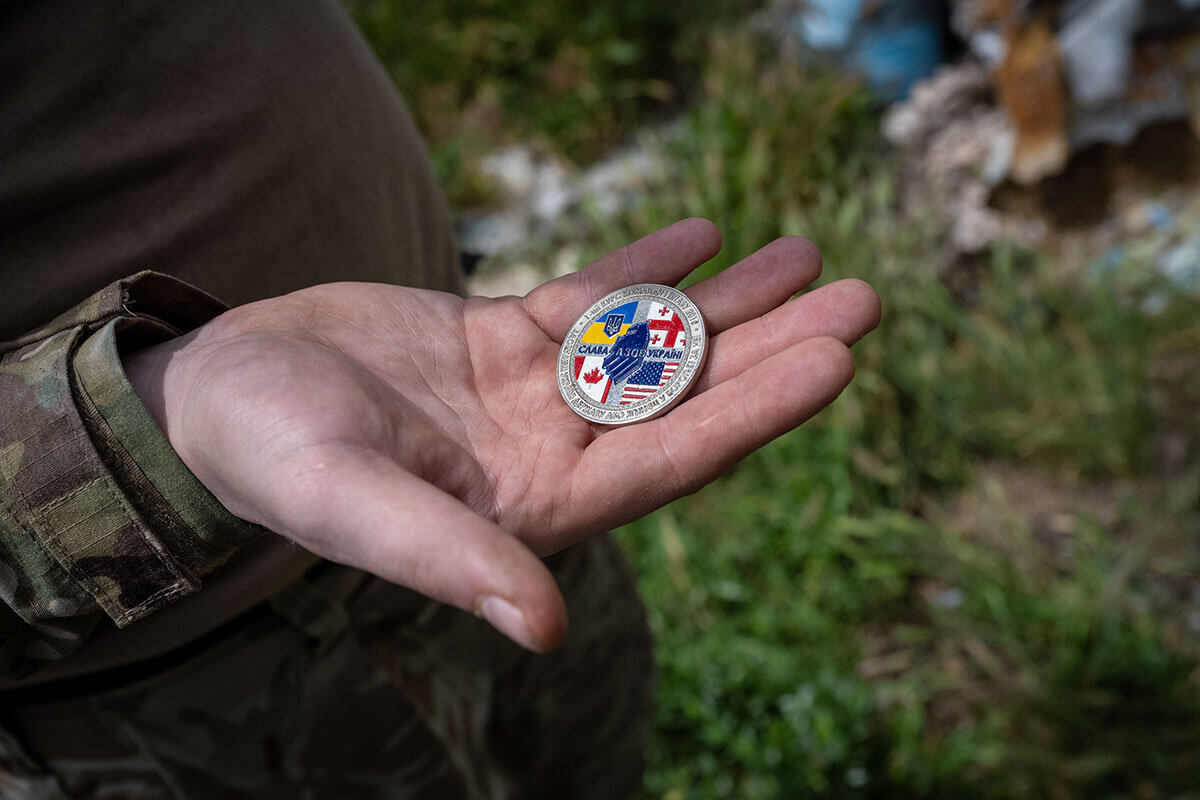Ukrainians cede land on eastern front, but hold on to hope
Loading...
| KRAMATORSK, Ukraine
Russian troops were already swarming the Donbas city of Severodonetsk when the few remaining Ukrainian defenders received the order to withdraw, to save their lives.
Relentless Russian bombardment – estimated by Ukrainian officials to have reached astonishing peaks of 50,000 or more Russian shells a day across the region – had already destroyed the only three bridge escape routes across the Siverskyi Donets River.
“We were waiting for that [withdrawal] order more than a month,” says a Ukrainian officer, acknowledging the strategic imperative of slowing Russia’s advance. The goal: to give Ukraine as much time as possible to deploy arriving American and European arms – longer-range artillery and rocket systems – that could tip the balance in the fighting.
Why We Wrote This
A story focused onA war of attrition, by definition, tests resilience. Yet even as Ukrainian fighters bow to Russian artillery in the east, they cling to hope that arriving Western arms will help them turn the tide.
The artillery reconnaissance officer from the National Guard Rapid Reaction Brigade, a major with a red beard who gave the first name of Denys, says that was achieved at a high cost.
Ammunition was low. Major Denys’ unit had been eating grass. And the four American-supplied M777 howitzer cannons the Ukrainians had been finding targets for – to devastating effect, sometimes wiping out an entire Russian battalion tactical group in a single day, the officer says – had been discovered by a Russian drone just days earlier and knocked out of service.
Surrounded by Russian forces on three sides, and with the river at their backs, their response to the late-June withdrawal order? “Run, run, [expletive] run!” recalls Major Denys.
The Ukrainians swiftly blew up their remaining vehicles, then escaped on dinghies and makeshift barrel rafts, pulling themselves along ropes slung across the river – even paddling with their arms – to get to the embattled city of Lysychansk, then still under Ukrainian control.
“The front line is in a very bad situation,” says Major Denys, speaking shortly after the withdrawal, as his group of 10 soldiers found brief sanctuary in the outskirts of Kramatorsk.
“The Russians have more firepower,” he says, noting a ratio of one Ukrainian shell fired back in response to 10 or 12 incoming Russian artillery rounds. “The difference is not slight; it’s [extremely] great.”
Land lost, time gained
That imbalance led Ukraine at the weekend to also conduct an orderly withdrawal from Lysychansk, which enabled Russia on Sunday to claim control of that city – and therefore all the Luhansk region. Both Luhansk and the still-contested Donetsk region together constitute Ukraine’s eastern industrial heartland of the Donbas, which Russia aims to occupy.
Despite the Russian gains, Major Denys says Ukrainian forces in Severodonetsk accomplished their mission. He says they exacted a high casualty toll – he estimates Russia’s were five times heavier than Ukraine’s – and forced Russia to expend vast military resources for land of limited strategic value.
Indeed, the prolonged fall of the two cities is a critical example of Ukraine’s perseverance and dogged resilience, in a war of attrition already in its fifth month, in which its troops are vastly outnumbered and outgunned.
“We lost the battle, but we will win the war,” says Major Denys, an 11-year veteran of the Ukrainian military, who quotes easily from Joseph Heller’s “Catch-22” and American war films like “Full Metal Jacket” and “Apocalypse Now.”
“Luhansk is a minor loss, because we won precious time in this battle, which will allow our allies to provide us with the necessary weapons and equipment for a further counteroffensive,” he says.
“We served as a kind of magnet for undressing the main forces of the Russian army, and we succeeded,” he says. “With every day of the war, we drive nails into … the Russian empire.”
Two conflicting timelines
Marking one of the few concrete achievements so far in the Kremlin’s costly campaign against Ukraine, Russia’s President Vladimir Putin on Monday awarded his two commanding generals in the Donbas the “Hero of Russia” award, and praised Russian soldiers as “brave, professional, and gutsy” for “liberating” all of Luhansk.
Ukraine’s President Volodymyr Zelenskyy, meanwhile, vowed that Severodonetsk and Lysychansk would be reconquered, even as Ukrainian forces dug in to defend Bakhmut, Sloviansk, and other cities to the southwest, where Russia has intensified bombardment in recent days.
On the battlefield, two conflicting, and uncertain, timelines are at play:
One is Russia’s ability to sustain its staggering scale of bombardment, capable of leveling cities, compelling Ukrainian forces to retreat, and paving the way for territorial gains.
The second is the speed at which Ukraine can acquire the longer-range weaponry, such as the American M777 lightweight 155mm howitzer, and the satellite-guided High Mobility Artillery Rocket System, or HIMARS, both of which bring Russian artillery and rocket launchers into range.
Similar systems are being sent by Britain, Germany, and other NATO members.
Until now, Russia has largely been able to strike from a safe distance, knowing Ukraine is hampered by the shorter range and dwindling stockpiles of most of its Soviet-era munitions.
The Pentagon says most of the 100 highly mobile, 25-mile-range M777s committed to Ukraine have arrived. Four HIMARS, which are capable of delivering in a single salvo as much explosive punch as a jet fighter’s bomb load, and with a range of more than 40 miles, are now in Ukraine. Another four are due this month.
The packages are part of nearly $7 billion in American military aid earmarked for Ukraine since Russia’s invasion began in February.
Announcing the arrival of the first HIMARS on Twitter on June 23, Ukraine’s defense minister, Oleksii Reznikov, thanked the United States, and said summer “will be hot for russian occupiers. And the last one for some of them.”
Tough test for American gun
A video posted by Ukrainian ground forces shows an M777 howitzer in action. Inscribed in permanent marker on the gun barrel: “From America with Love.”
The American weapons are key to Ukraine’s ability to counterattack, but Major Denys notes they have some limitations.
“It’s good artillery, but it’s not very used to our conditions here,” he says. “It’s very sensitive.”
In Iraq, American artillery was rarely targeted directly by insurgents, so U.S. forces could “make a few shots, and that’s it,” he says. Yet in Ukraine, trading fire with Russians, he adds, just 10 rounds fired in a row can overheat the barrel.
“Artillery must be like a machine gun here,” says Major Denys. “Because Russian artillery, the Soviet artillery, is very like a machine gun.”
The disparity in artillery range and volume is felt across the broad arc of the Donbas front lines. And shortages are not just of longer-range ordnance, if the fight along the Izium front – which is currently blocking Russian access to key cities in Donetsk – is any indication.
“The boys are holding on, but there are not enough vehicles, not enough equipment,” says a goateed squad leader with tired eyes called Serhii, who wears a green bandana and black tactical gloves, his uniform dusty and Motorola radio on his shoulder worn from hard use.
He says his unit retreated from one village in late June using motorized farm scooters and even sleeping bags as makeshift stretchers to evacuate the wounded through minefields. They later recaptured that village, but of his brigade members at the front, Serhii reckons only 35% survived.
“If we had artillery, ...”
He, too, speaks of the overwhelming odds of facing Russian firepower.
“When the Russians are shooting, we can hear that artillery shelling is going on, but from our side, one lonely mortar is coming,” says Serhii, speaking near the town of Druzhkivka.
“Sometimes, very rarely, we can hear this M777, but it is not enough,” he says. Troops have not been able to rotate for rest, and Serhii says he broke his collarbone while diving for cover, and it has set the wrong way.
“The Russians have many, many soldiers, and they don’t care about [losing] their soldiers,” says Serhii. “When we were in the forest we saw many Russians coming, and we killed them all with machine guns. The Russians didn’t even take the bodies; they were stinking for days.”
But the fight for the Donbas is taking a heavy toll.
“Everyone is so tired,” says Serhii. “If you ask the boys about the future, they will tell you they are just living for today, and not thinking about tomorrow.”
“The reason for everything is just because we don’t have artillery,” he adds. “If we had artillery, everything would be different.”
Oleksandr Naselenko supported reporting for this story.









